How to Get Referrals From Customers to Boost Sales in 2023
Casey O'Connor
Smart sales teams know that learning how to get referrals from existing customers is a highly effective way to boost revenue and sales.
In fact, sales referrals have been shown to have a 70% higher conversion rate than leads from other sources and close 69% more quickly.
In this article, we’ll go over everything you need to know about sales referrals, including what they are, why they’re so important, and how to get referrals from your existing network.
Here’s what we’ll cover:
- What Are Business Referrals?
- Why Are Referrals Important?
- How to Get Referrals from Customers: 7 Best Ways
- Steps to Asking for a Client Referral
- Sales Referral Best Practices
What Are Business Referrals?
A business referral is a new customer that was signed as a result of an existing customer recommending your product to them.
A business referral happens when a satisfied customer finds so much value in your offer that they encourage others to purchase from you, as well. Sales reps generate business referrals by connecting with and delighting their existing customers.
Business referrals can be organic, meaning happy customers generate positive word-of-mouth without any prompting from you.
They can also be incentivized. Incentivized referral programs offer customers rewards for generating new referral-based business for your team.
 Referrals are a very powerful way to generate business because they’re based on personal experience. It’s easy for prospects to take everything a sales rep says with a grain of salt, but it’s harder to write off a glowing recommendation from a trusted peer or respected professional contact.
Referrals are a very powerful way to generate business because they’re based on personal experience. It’s easy for prospects to take everything a sales rep says with a grain of salt, but it’s harder to write off a glowing recommendation from a trusted peer or respected professional contact.
Sales teams can build a strong referral network by creating a personalized, value-driven buying process and an outstanding customer experience. Consistent referrals can lead to a significant improvement in ROI from your existing network.
Why Are Referrals Important?
Regardless of their location, product type, or target market, all sales teams benefit from frequent and reliable sales referrals. Regular referrals help increase your overall brand awareness, build your credibility, and increase sales.
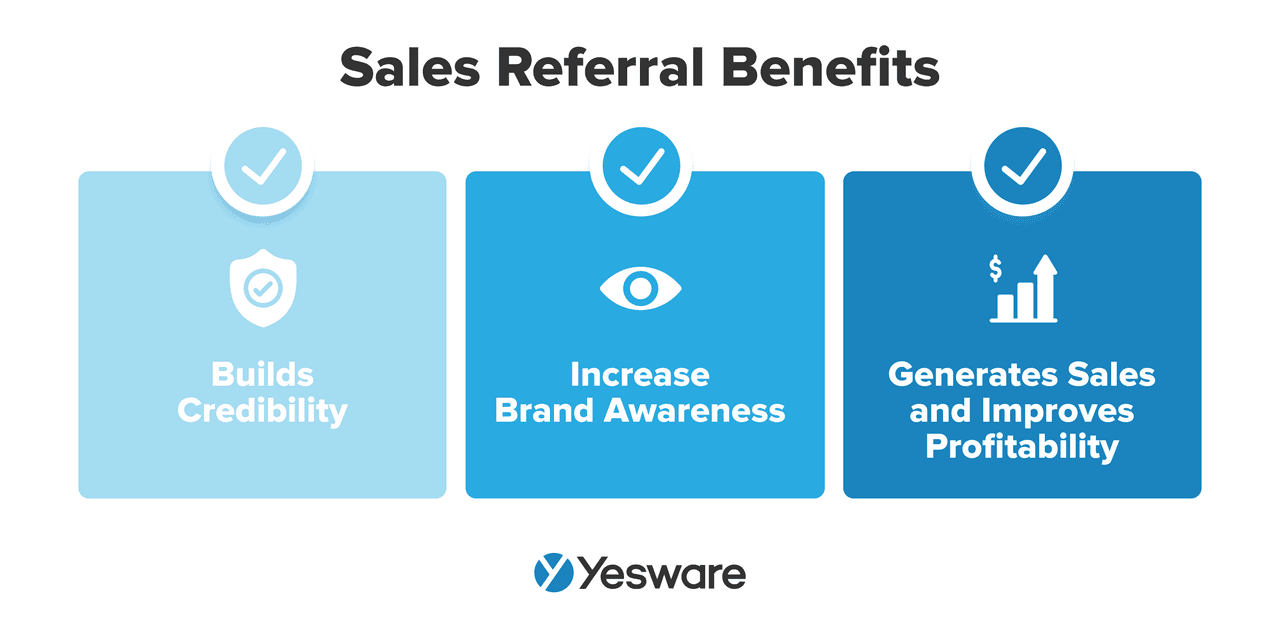
Builds Credibility
Successful referrals are an indisputable sign that your product resonates with your target market.
In fact, referrals are probably the most organic form of social proof available to buyers. Sales referrals help teams build trustworthiness and improve their sense of credibility in the market.
Increases Brand Awareness
More customer referrals means more reach throughout the market.
Word-of-mouth marketing helps spread the word about your company, and the content your team creates to encourage referrals (more on that in the next section) will make it easy for your team to widely share thought leadership pieces.
The legwork your team does to generate referrals will make your brand more visible in your market.
Generates Sales and Improves Profitability
According to Nielsen, 92% of buyers trust recommendations from a peer over any other form of marketing.

Couple that with the fact that referred leads are 30% more likely to convert and translate to 16% higher lifetime value (LTV) than non-referred leads, and it’s easy to see how quickly referrals boost your bottom line.
Not only that, but a strong referral network can become very self-sustaining. Referred customers have a 37% higher retention rate and are four times more likely to go on to refer other customers.
Sales referrals are very effective at strengthening your network and increasing long-term customer loyalty.
How to Get Referrals from Customers: 7 Best Ways
Here are 7 of our most effective strategies for getting referrals from customers.
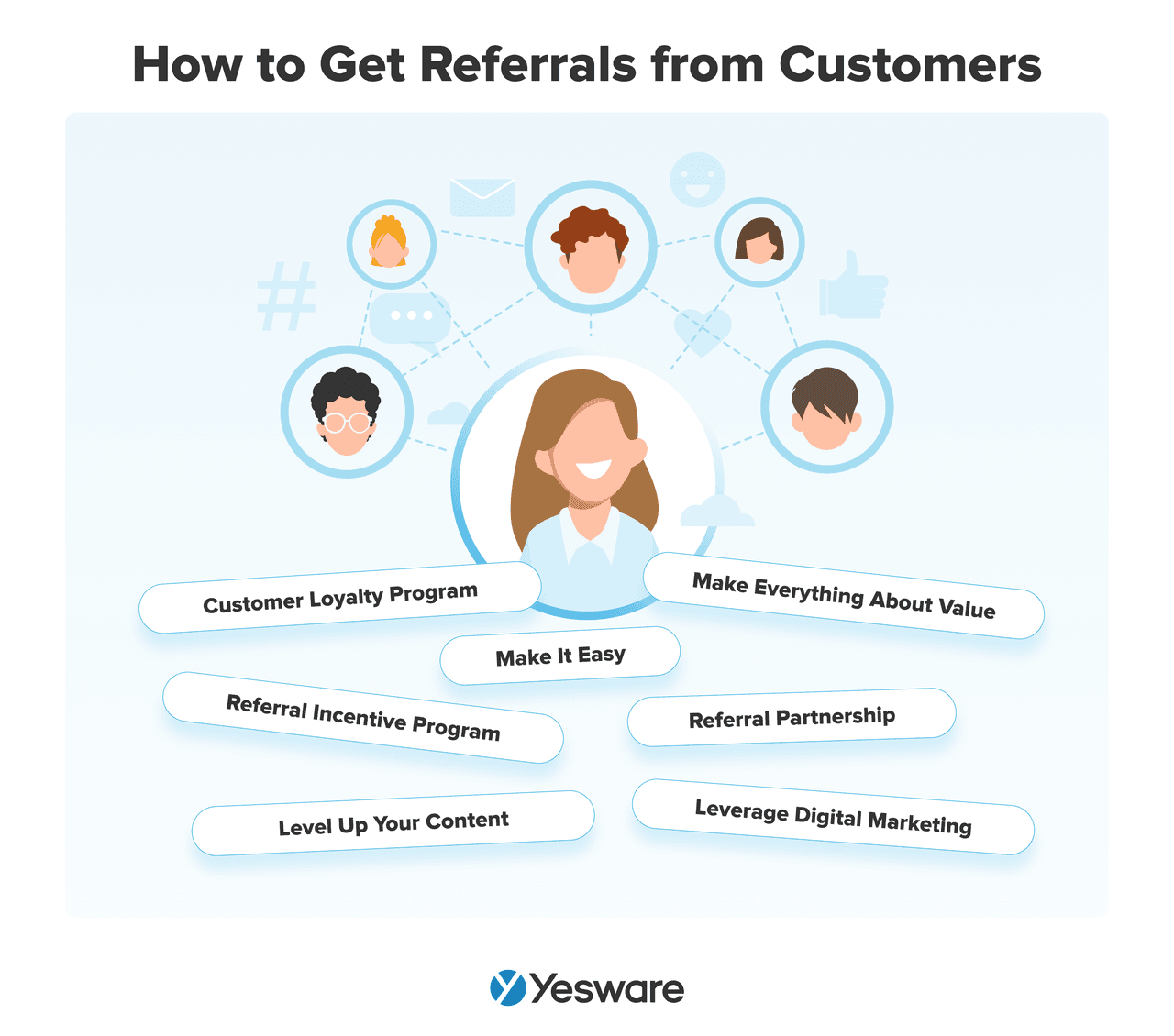
1. Customer Loyalty Program
Many companies offer rewards to customers who demonstrate loyalty to your organization.
It’s up to your team how you define “loyalty,” but most customer loyalty programs offer incentives to customers who stay on for a certain amount of time and even more lucrative ones to those who refer new business.
A customer loyalty program typically rewards participants with a business-based prize, like a free month of subscription for each new referral. Others offer points for different loyalty objectives that can be accumulated and traded for something of value, like a subscription upgrade.
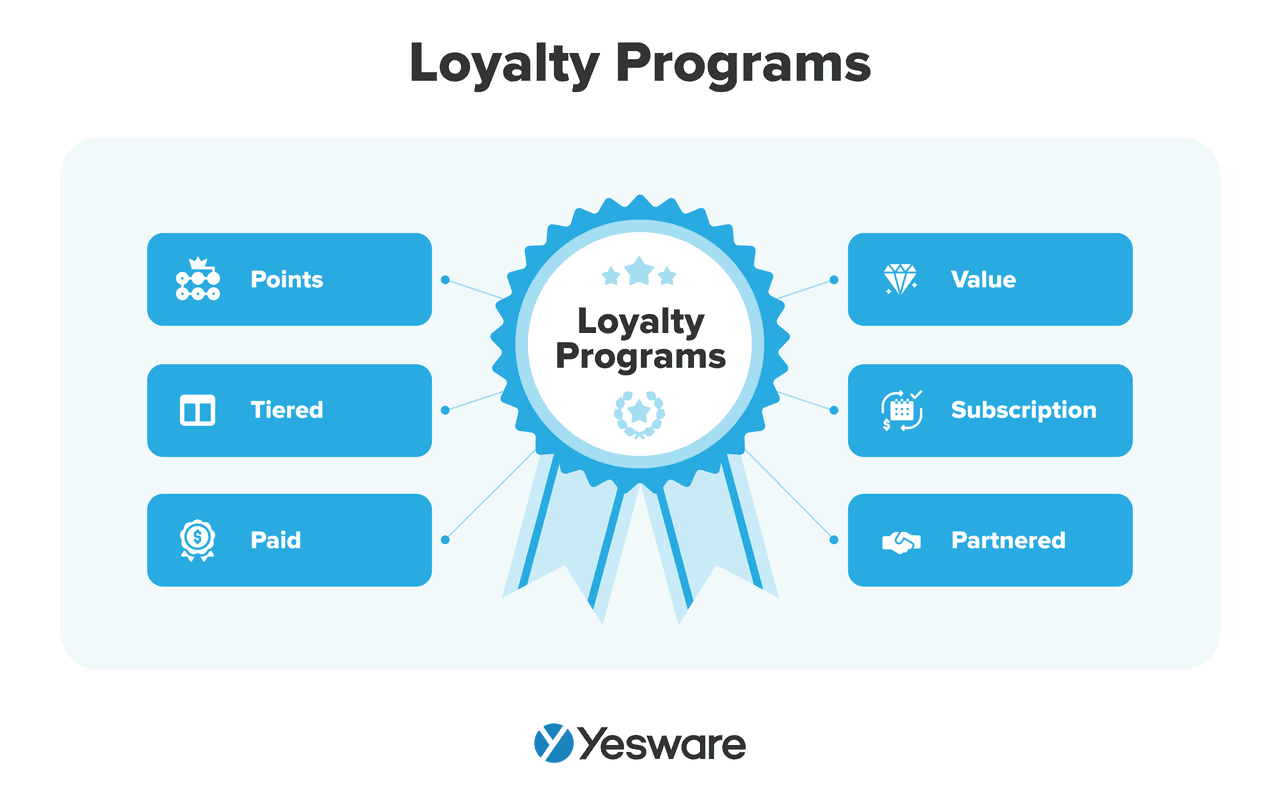
2. Make Everything About Value
Even when you’re not specifically trying to get referrals, it’s important to make the buying process value-driven — but that’s even more true when you’re hoping to generate referral business.
Make sure the sales process is designed with the buyer in mind, with the intention of keeping them engaged throughout and being an invaluable resource for them. This should continue even after they sign on as customers.
The more you add value, the more you remain top of mind and increase the chances that a customer will feel inclined to recommend you to a peer.
3. Make It Easy
Sometimes customers shy away from referring to other people because it can be a bit of an awkward process.
You can make it easier for them by creating templates or scripts they can use when they want to recommend your product to someone else.
Just be mindful to only offer this option to customers who seem satisfied enough to put in a good word for you; it can come across as very pushy if you share this content with a lukewarm customer.
4. Referral Incentive Program
A referral incentive program is similar to a customer loyalty program, but it’s focused much more specifically on referrals.
There is also usually a wider variety of incentives, sometimes including cash or gift cards as a “commission” for each new referral.
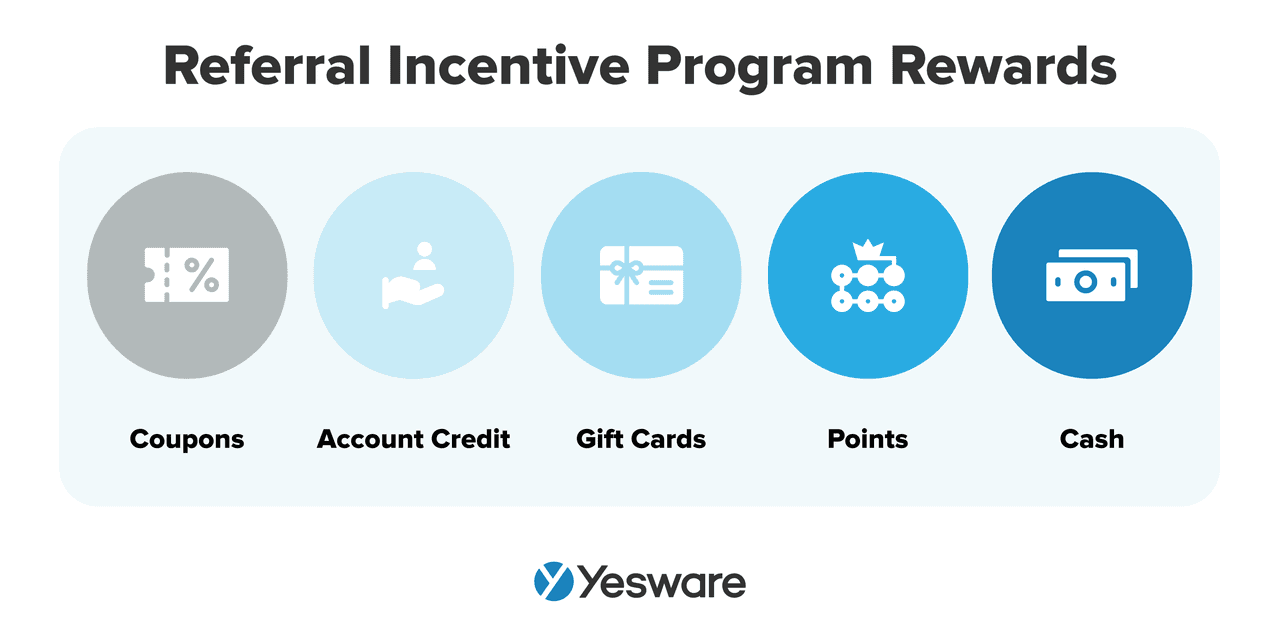
The more systematic and structured your referral incentive program is, the more successful it will ultimately be.
5. Referral Partnership
You can leverage professional connections in your target market’s vertical by creating a referral partnership program in which your organization and another organization with which your customer may do business each recommend the other to the customer.
You can sweeten the pot for the customer by offering a discount on one or both services when they sign up with both vendors.
Just make sure that any business you form this kind of partnership with shares your values and is worthy of your recommendation. Your reputation will be affected by those you collaborate with, for better or for worse.
6. Leverage Digital Marketing
Digital marketing can give your team a huge advantage when it comes to generating business referrals.
Strategies like email marketing, search engine optimization, and content marketing can all boost your engagement and credibility and help you position yourself when newly-referred prospects do research into your brand.
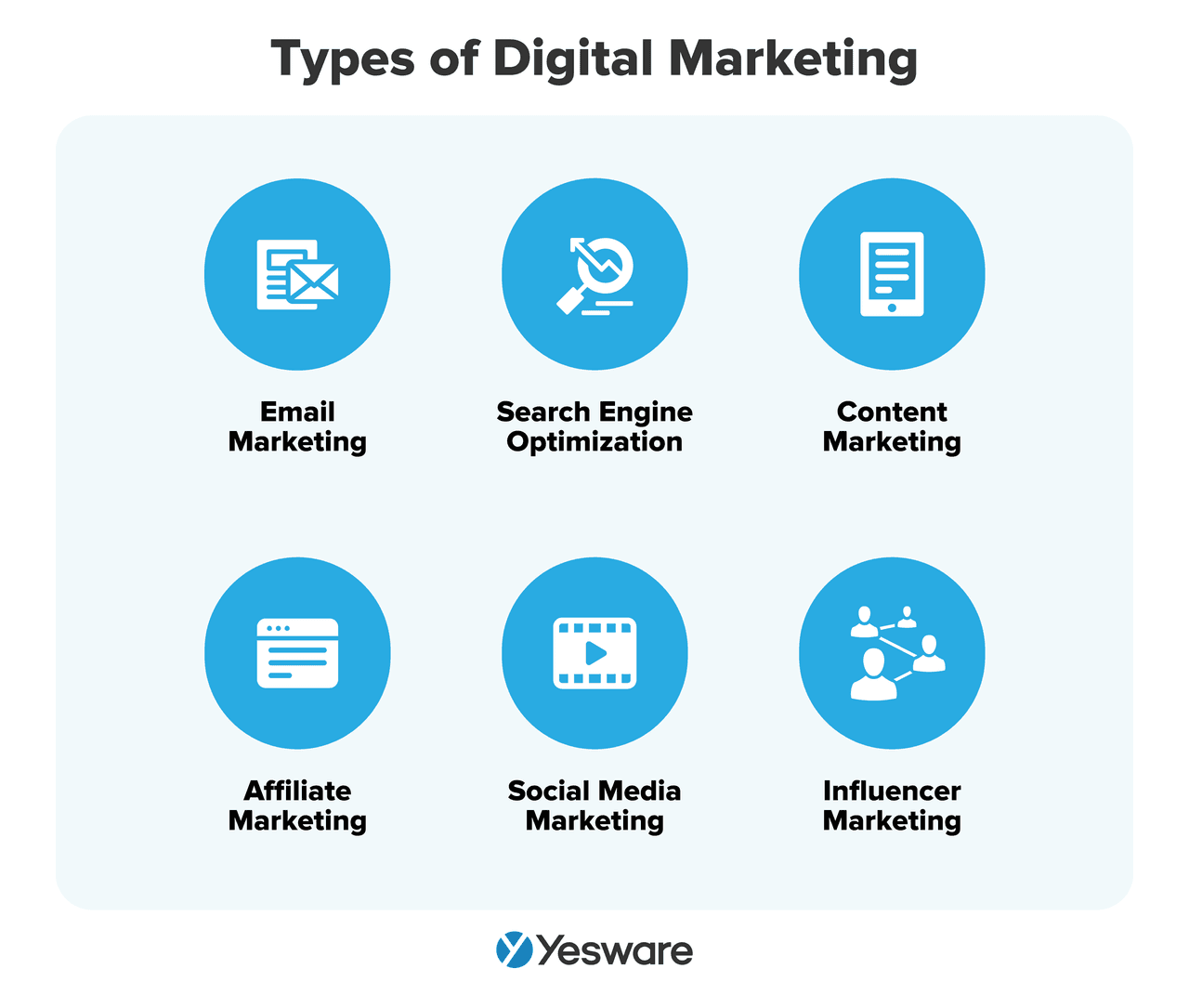
Your social media presence can be a particularly important factor when you consider how to get referrals from customers. Make sure each of your social media profiles are optimized, and take advantage of the professional connection tools offered by platforms like LinkedIn (e.g., their free Advanced People Search) to help identify potential good-fit referrals.
7. Level up Your Content
The content you publish works in the background for your referral program.
Content marketing collateral like blog posts, webinars, ebooks, whitepapers, podcasts, and videos all support your organization’s credibility and thought leadership. They demonstrate expertise and a willingness to add value to the market.
When referrals get good word-of-mouth feedback about your brand, they’ll be that much more inclined to trust you when they find your readily available, relevant, and valuable library of content.
Tip: Improve the buying process and generate more referrals with the findings below.
 Sales Engagement Data Trends from 3+ Million Sales ActivitiesLooking at millions of tracked email activity over the past few years, this ebook is filled with our top studies and findings to help sales teams accelerate results.
Sales Engagement Data Trends from 3+ Million Sales ActivitiesLooking at millions of tracked email activity over the past few years, this ebook is filled with our top studies and findings to help sales teams accelerate results.
Steps to Asking for a Client Referral
Asking a customer for a client referral can be uncomfortable, but it gets easier with practice. The following steps will help you master the process.
1. Look At Your Sphere of Influence
In other words, which customers are engaged enough with your brand that they’d be likely to put in a good word for you? Not every customer fits this description, so it’s important to discern between run-of-the-mill subscribers and enthusiastic advocates.
One way to do this is by determining a Net Promoter Score (NPS) for each of your customers.
A customer’s NPS score can range between 0 – 10 and indicates how likely they are to recommend your company to someone else.
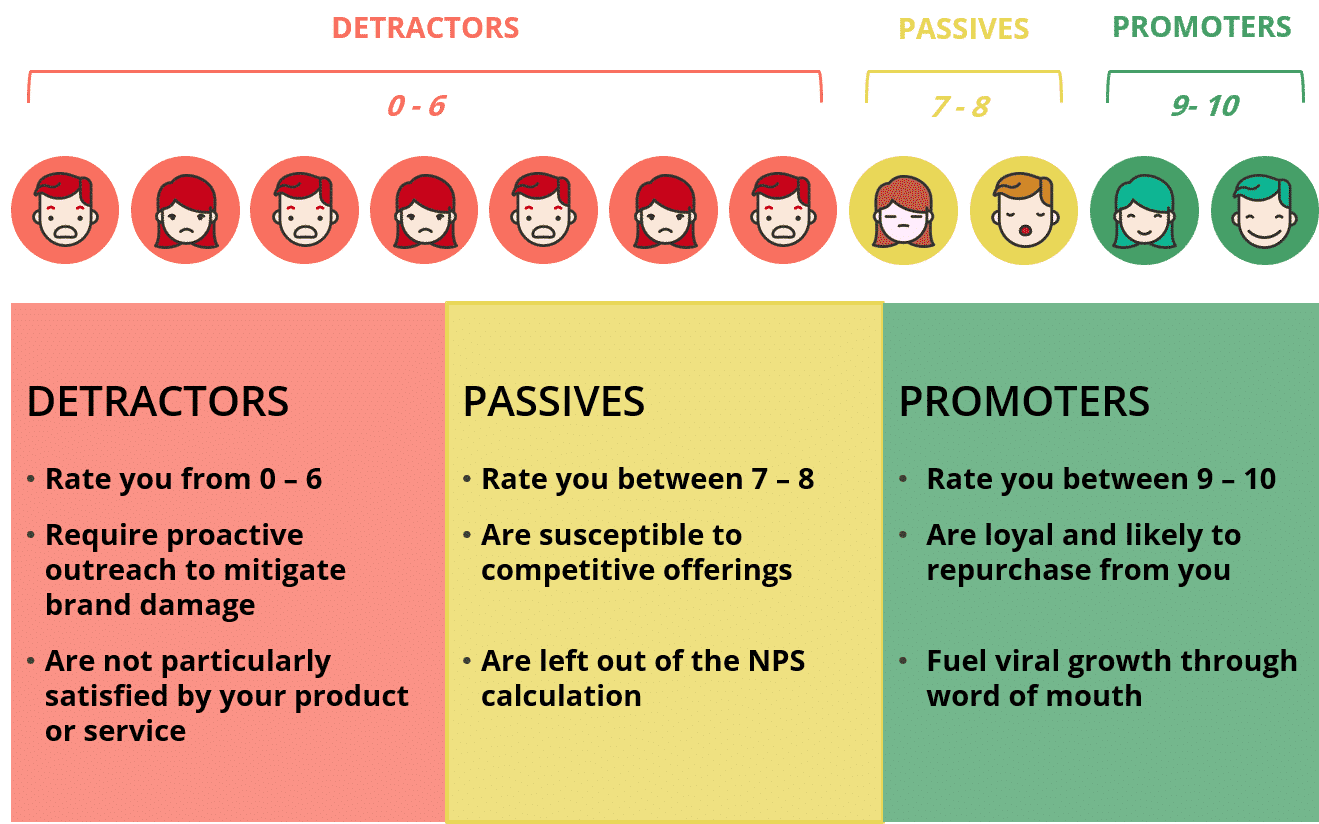
“Detractors” are unlikely to give you a referral and are probably more in need of damage control than a request for a good review. “Passives” are middle-ground customers; they’re not dissatisfied with your product but aren’t necessarily the most loyal.
“Promoters” earn an NPS score of 9 or 10 and are most likely to become your brand ambassadors and generate lucrative referrals.
You can find your customers’ NPS by administering a simple anonymous survey.
2. Pursue your Promoters
Once you’ve identified your Promoters via NPS, you can start to engage them in a way that will pave the way for a referral.
Follow up with them often and add value wherever you can. Don’t be a brown-nose, but be intentional. Customers are more likely to make a referral when you make them feel valued and special.
3. Make the Ask
For most customers with a Promoter score, it’s okay to ask directly if they’d ever be willing to make a referral on your behalf. That being said, it’s still important to have tact. Find the right time to ask (more on this in the next section), and always be polite.
Sales Referral Best Practices
Keep in mind the following best practices as your team works to generate more sales referrals.
Be Ready
It’s a good idea to have systems in place for:
- Identifying good opportunities for referrals, both within your existing customer base and from a pool of potential prospects
- Processing new referrals as soon as they come into the pipeline
Having a standard approach for these processes will help ensure that your team capitalizes on every opportunity. Many teams, for example, create a specific set of sales collateral that is used specifically for referrals, like one-sheets and special packages that make it easy to say yes quickly.
Always Exceed Expectations
The best way to generate sales referrals is to deliver a consistently outstanding customer experience. Steady word-of-mouth business relies on customer loyalty, which has to be earned over time.
And this goes beyond their experience with the product itself, though that’s important too. It’s also imperative that your team fosters a supportive, trusting, and valuable relationship with your most influential customers. Celebrate their successes with them, troubleshoot their losses, and look for every opportunity to add value to their business.
Again, be wary of turning this into a “pick me” dynamic. Always be genuine, and read the room — if the customer seems perplexed or put off by your efforts, back off for a bit. However, an exceptional customer experience is a prerequisite for a client referral.
Look for the Right Opportunities
Timing is very important when it comes to referrals. If you can, try to reserve the direct ask until after you’re confident you’ve over-delivered on your promises.
In fact, it’s even better if you can ask for a referral on the heels of positive feedback from the customer.
Whatever you do, don’t ask in the middle of a lull in communication. There is definitely finesse involved in asking for a referral, and it’s best done when there’s already an air of positivity.
Combine Word of Mouth and a Deliberate Referral Program
Organic, word-of-mouth referrals are one of the most powerful forms of marketing a sales team can access. Customers are significantly more likely to trust an unprompted positive review of a product from a user similar to them than they are to put stock in a marketing-generated campaign.
That being said, the sales teams with the most referrals leverage the power of both organic referrals and an intentionally designed referral program. Sourcing referral leads from both channels optimizes your resources and gives you the best chance of capturing the most conversions.
Recognize and Appreciate Referral Sources
Do not forget the art of the thank you note when it comes to referrals. It’s imperative that you take the time to acknowledge and appreciate any customer who takes the time and effort to refer you to a new client.
Make It Okay to Say No
For some customers, a referral is uncomfortable no matter how impressed by your product they are. Always make sure your customers know that it’s okay to say no to initiating a referral and that declining the ask will have no impact on their standing or experience as a customer.
(And make sure you follow through with that — never pull resources from any customer who declines to refer you.)
Instead, you might consider offering alternatives to direct referrals. Some customers, for example, may feel more comfortable participating in a case study or a testimonial, which can both also be very valuable forms of social proof.
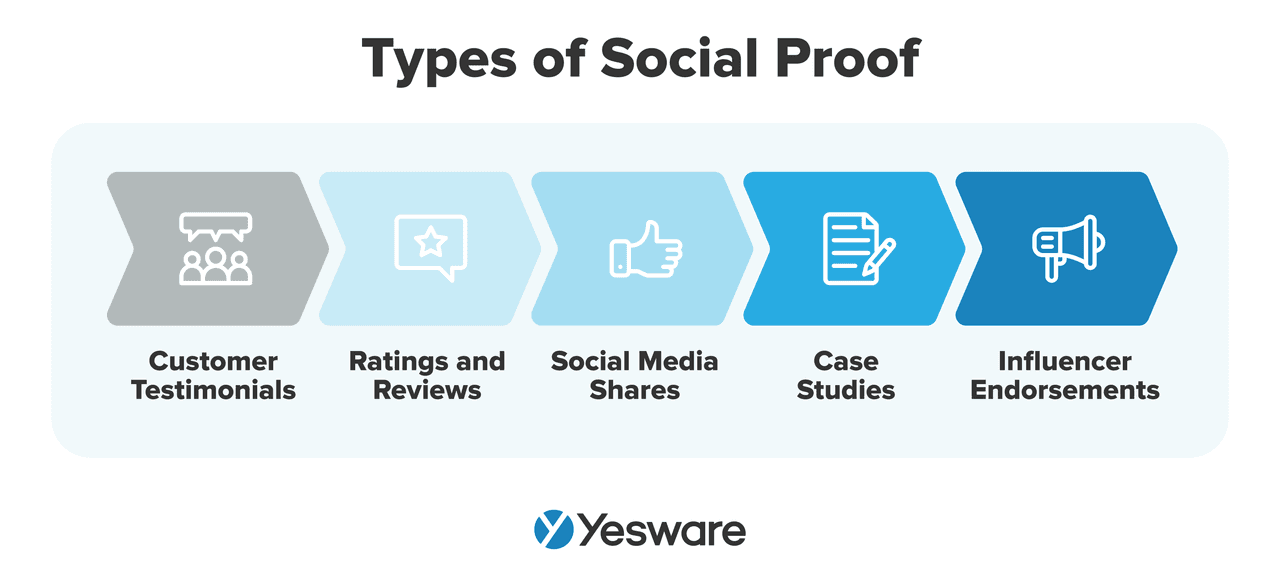
And, for the really reserved customers, an anonymous survey is a great way to get positive feedback that can still help move your team forward and attract new business.
Make Your Content Shareable
Remember that referral marketing is all about broadening your reach and strengthening your network.
One easy way to help this effort is to make all of your content shareable. This should only take a few quick setting updates within your sales enablement platform.
The more people your content reaches, the more trust your brand generates.
Track the Success of Your Program
Remember: what gets measured gets managed.
To that end, make sure you have a standardized process for tracking, managing, and analyzing the data around your sales referrals. Ensure that everyone on the sales and marketing teams are on the same page about how and where to record sources of and interactions with referred customers.
The more carefully you track your results, the more you’ll be able to optimize your referral strategies.
Personalize Your Requests
Asking for a referral is not a small deal. Even for your most satisfied customers, a referral means putting their reputation on the line in the name of your company. If the referred customer doesn’t end up finding as much success with your product, any potential severing of that relationship would be partially your company’s responsibility.
With that in mind, make sure that you are sincere and personal when you make the request. Talk specifically about the success and achievements you’ve celebrated with the customer thanks to your product, and (if you can) offer them personalized benefits that might help incentivize them.
Does your team have a system in place for generating sales referrals? Where are your most lucrative referral sources? What benefits have you seen from investing in referral marketing?
Get sales tips and strategies delivered straight to your inbox.
Yesware will help you generate more sales right from your inbox. Try our Outlook add-on or Gmail Chrome extension for free, forever!
Related Articles
Casey O'Connor
Casey O'Connor
Casey O'Connor
Sales, deal management, and communication tips for your inbox

